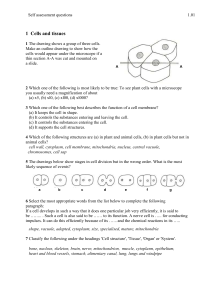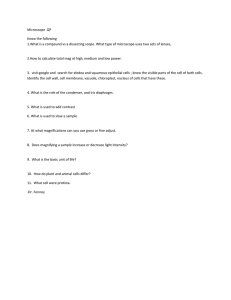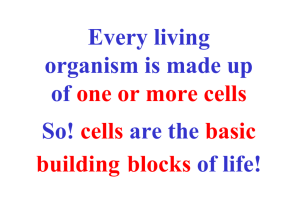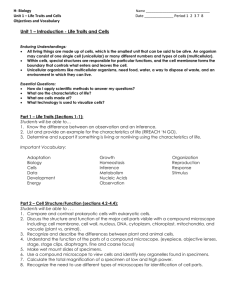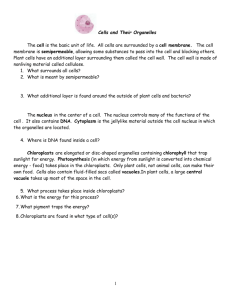Animal Cells and Plant Cells
advertisement
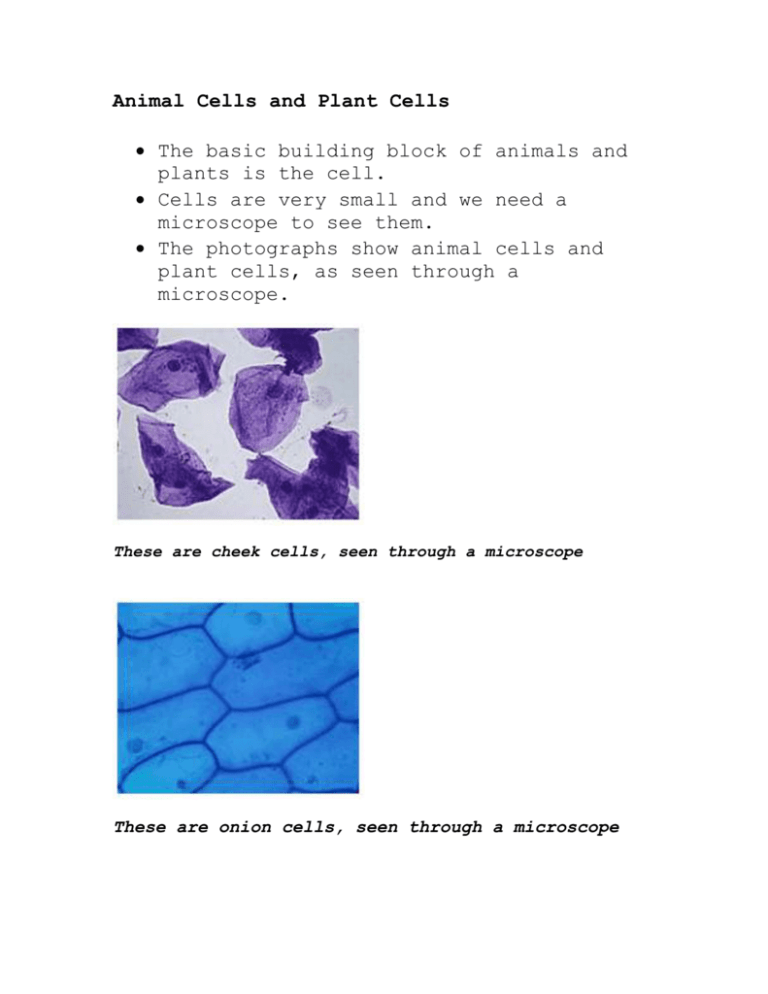
Animal Cells and Plant Cells The basic building block of animals and plants is the cell. Cells are very small and we need a microscope to see them. The photographs show animal cells and plant cells, as seen through a microscope. These are cheek cells, seen through a microscope These are onion cells, seen through a microscope Cells are made up of different parts. Vacuole Vacuole Animal cells and plant cells both contain: Cell membrane Cytoplasm Nucleus Vacuole (Very large in a plant cell and small in animal cell) Plant cells only also contain: Chloroplasts Cell wall Part and Function Cell membrane: o Controls what substances can get into and out of the cell. o Surrounds and protects the cell Cytoplasm: o Jelly-like substance, where chemical reactions happen. o Allows oxygen and nutrients to circulate to other parts of the cell Nucleus: o Directs the cell’s activity o Contains chromosomes made of genes which allow the cell to grow and reproduce Vacuole: o Contains a liquid called cell sap, which keeps the cell firm. o Stores nutrients for later use and contains waste that needs to be eliminated Chloroplast: o Where photosynthesis happens (sugar is produced from solar energy and carbon dioxide) o Chloroplasts contain a green substance called chlorophyll (absorb energy from the sun). Cell wall: o Thicker and more rigid than cell membrane o Made of a resistant material called cellulose, which supports the cell. o Found on the outside of the cell membrane
